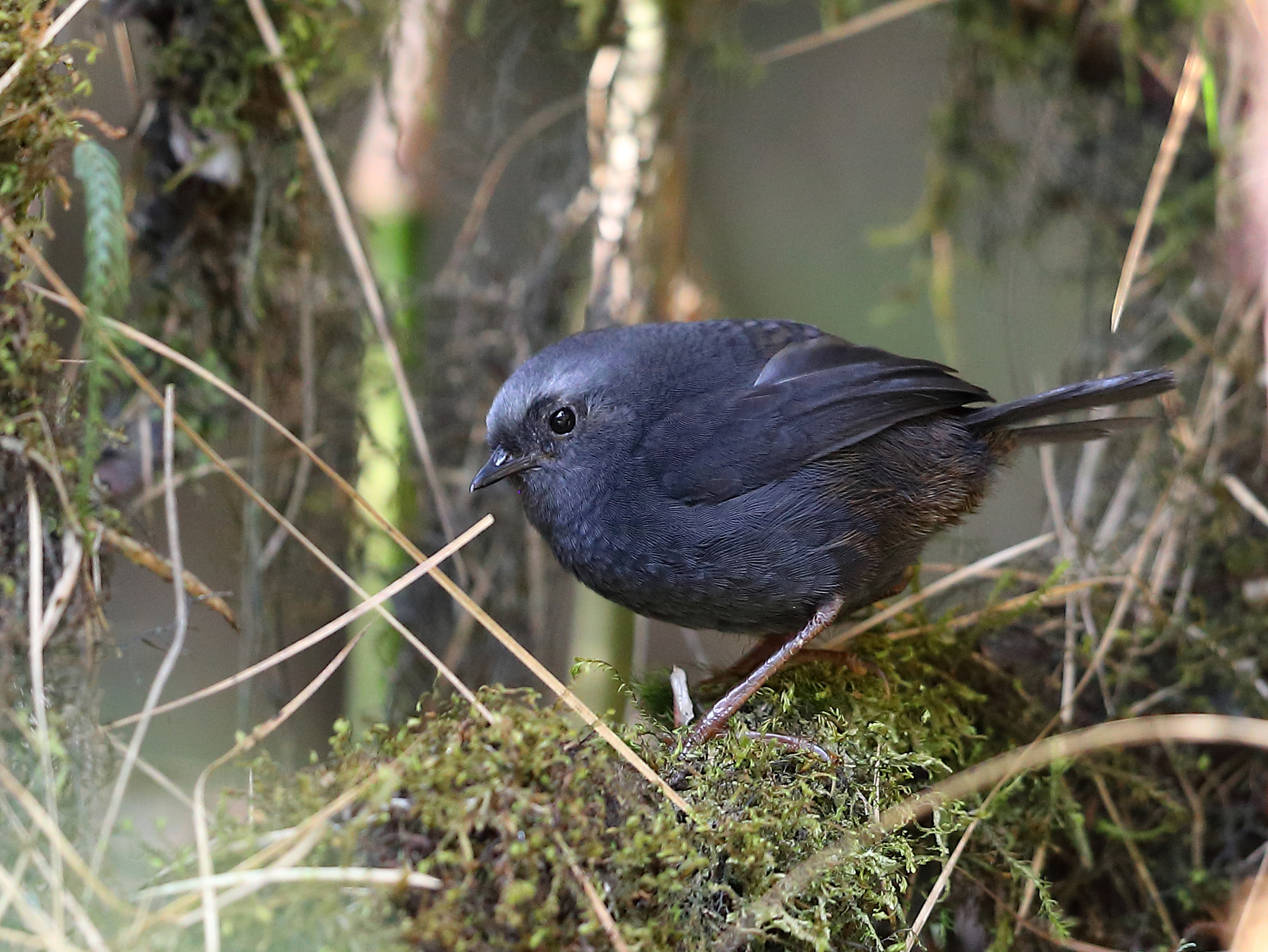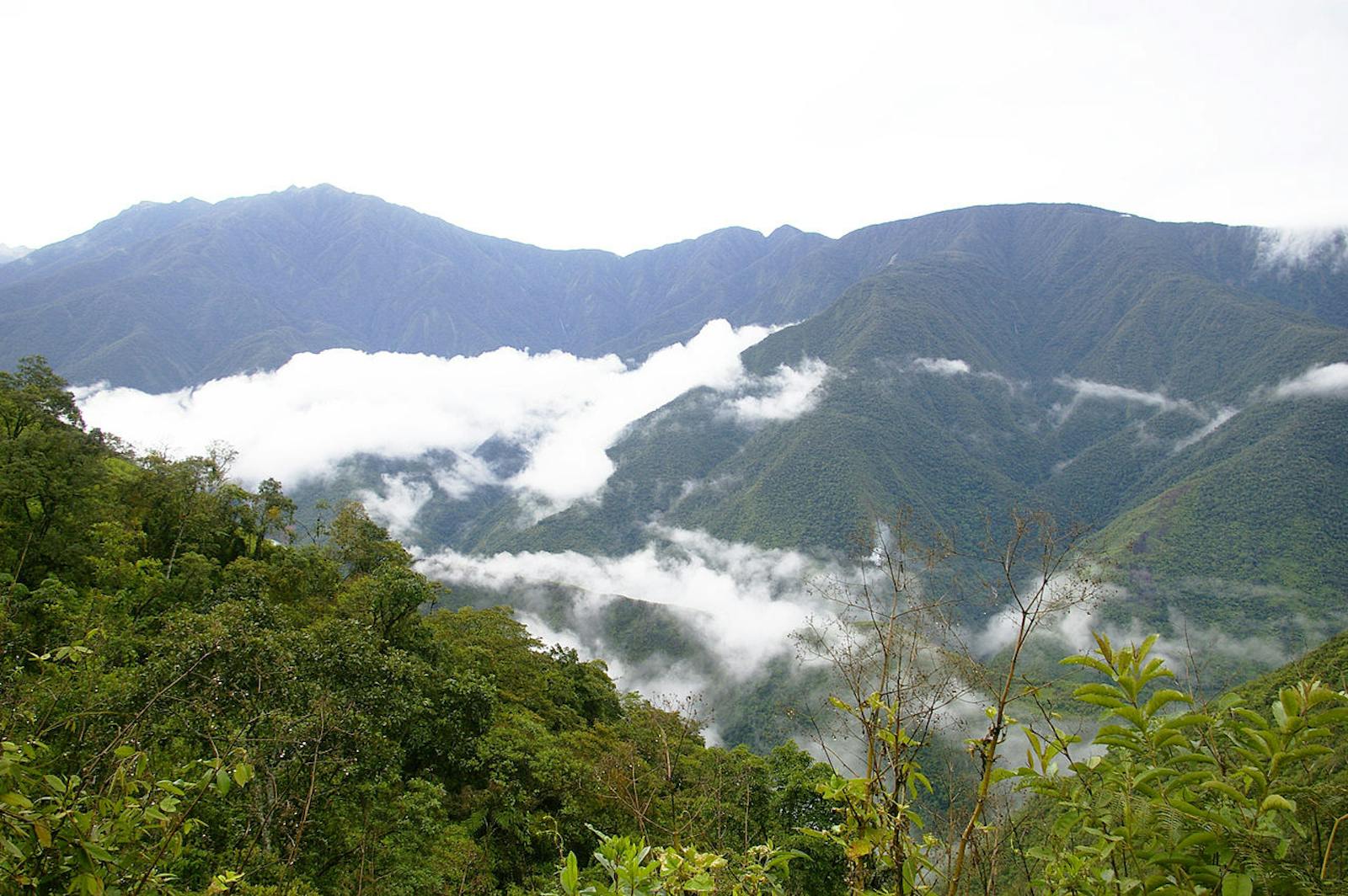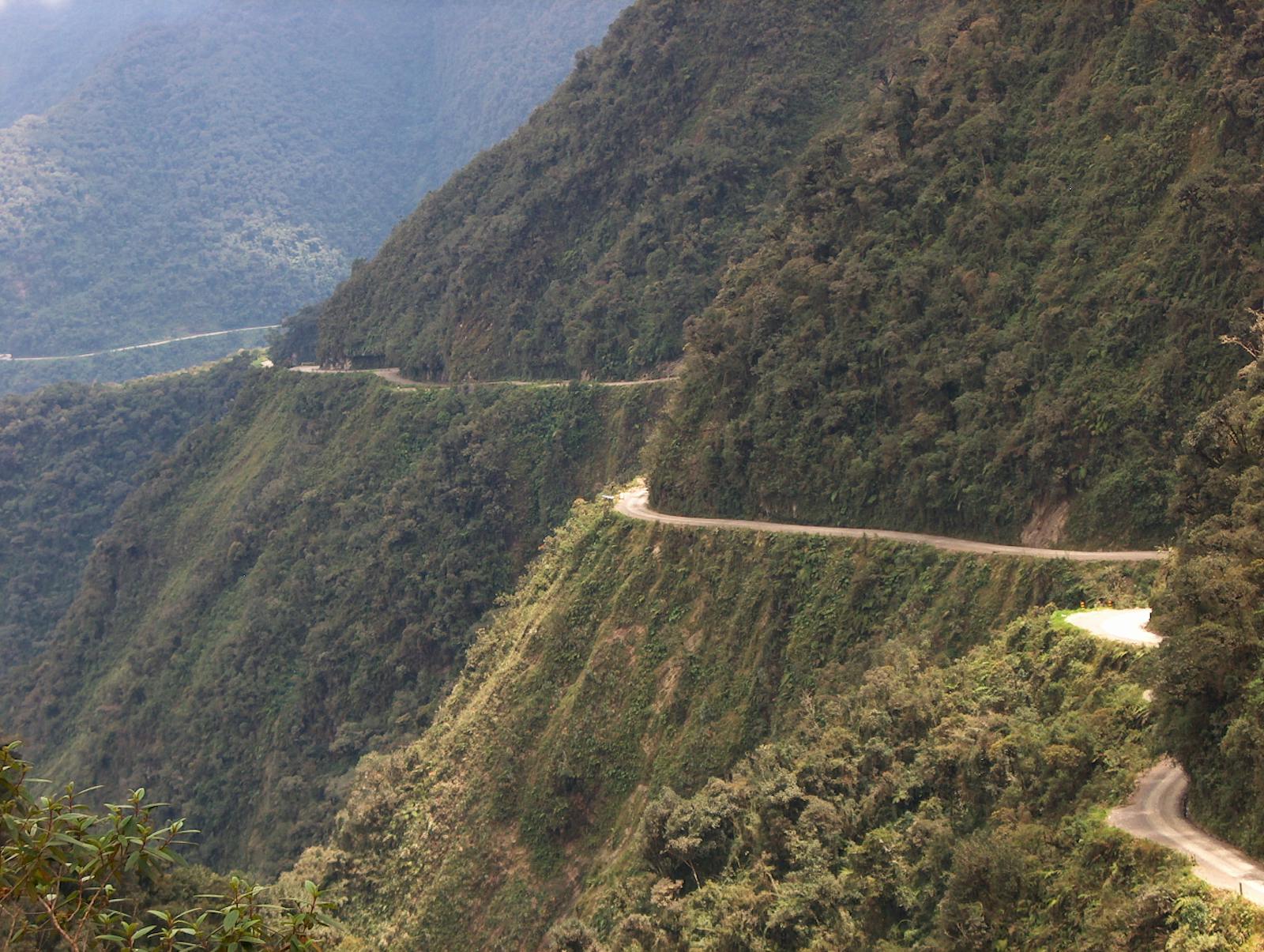Bolivian Yungas
The ecoregion’s land area is provided in units of 1,000 hectares. The conservation target is the Global Safety Net (GSN1) area for the given ecoregion. The protection level indicates the percentage of the GSN goal that is currently protected on a scale of 0-10. N/A means data is not available at this time.
Bioregion: Andean Mountain Forests & Valleys (NT11)
Realm: Southern America
Ecoregion Size (1000 ha):
9,075
Ecoregion ID:
444
Conservation Target:
92%
Protection Level:
5
States: Brazil
The critically endangered Bolivian chinchilla rat is endemic to the Manuel Maria Cabellero Province, living in burrows in rocky areas within the cloud forests of the Bolivian Yungas. These rats are thus named because of the similarity of their long, fuzzy, silver grey fur to that of chinchillas. The Bolivian chinchilla rat is herbivore and gives birth to precocial young—offspring that are born after long gestation periods, but are more mature and mobile from birth. Although little is known about them, they appear to be specialized in rocky open areas which can be common in the rugged southern Andes where they live.
This ecoregion in Bolivia and parts of Peru forms a transition along the Andean slope between Amazonian and highland Puna habitats, which contributes to the high levels of biodiversity and endemism characterizing this unique ecoregion. Much of this region is under the protection of national parks; however, slash and burn practices threaten most of the unprotected habitat.

The flagship species of the Bolivian Yungas ecoregion is the diademed tapaculo. Image credit: Creative Commons
The Bolivian Yungas are restricted to west-central Bolivia and extreme southeastern Peru. The northern, southern, western, and eastern boundaries of this ecoregion terminate at approximately the 13° and 17° south latitudes and 69° and 63° west longitudes, respectively. Water droplets and rain accumulation brought by the northern trade winds contributed to the high humidity of the Yungas.
The landscape is complex, ranging in elevation from 400 m to well over 3500 m, with most of the higher peaks occurring in outlying Andean ridge tops. Transitioning along the Andean slope between Amazonian and highland Puna habitats is unique to this ecoregion. The habitat includes montane cloud forest and other types of evergreen forest. Trees are often lined with various other plants growing on them, including bromeliads, orchids, and tree-ferns; bamboo also characterizes the region, especially in areas disturbed by landslides.
_female_Piquiri_River-%20Found%20in%20493-CC-Charles%20J%20Sharp-2015.JPG)
Jaguar. Image credit: Charles J Shar, Creative Commons
The number of endemic species in this ecoregion is high, with 35 native and range-restricted species of vertebrates, including the diademed tapaculo and green-capped tanager. Expeditions were undertaken to study such rare and highly endemic populations, such as the southern helmeted curassow. Other endemic birds include black-hooded sunbeam and black-throated thistletail, which are found strictly in the upper montane forests of Bolivia.
Although birds and plants represent the major taxa of native wildlife, mammals such as the little-known brocket deer can also be found. The high endemism of montane species is accompanied by more wide-ranging, lowland dwelling Neotropical mammals, such as lowland tapir and jaguar. Specialists of Andean, Andean slope, and dry habitats are also present, such as the spectacled bear, Geoffroy’s cat, and pacarana.
Fortunately, most protected areas in this ecoregion are difficult to cultivate due to inaccessibility, steepness of terrain, and very high rainfall. There are several relatively large protected areas covering this ecoregion in both Peru and Bolivia, including Tambopata-Candamo, Carrasco National Park and Madidi National Park. The distribution of these protected areas within the Yungas is well covered considering petroleum access and habitat alteration.

South American tapir. Image credit: Sharp Photography, Creative Commons
Although Bolivia has a decent and growing National Parks system, threats in the form of habitat loss and general degradation due to human activities persist outside protected regions. This ecoregion is threatened because it is easier for local farmers to burn than true montane forest for growing cash crops. Extensive forest clearing in the Bolivian Andean foothills for crop cultivation has endangered over 70 species of birds, especially in the Departments of La Paz and Cochabamba. Additionally, certain game species from this ecoregion are threatened by over-harvest for local food source and the wild bird trade.
Therefore, the priority conservation actions for the next decade are to: 1) support sustainable farming of cash crops; 2) prevent petroleum extraction; and 3) promote awareness through education programs to reduce overharvesting and illegal pet trade.
Citations
1. Brooks, Daniel. 2018. Bolivian Yungas. https://www.worldwildlife.org/ecoregions/nt0105. Accessed July 2, 2018.
2. Stattersfield, A.J., M.J. Crosby, A.J. Long and D.C. Wege. 1998. Endemic Bird Areas of the World: Priorities for Biodiversity Conservation. Birdl. Cons. Ser. 7, Cmabridge, UK.
3. Tarifa, T., 1996. Mamíferos. Pp. 165-264. en P. Ergueta S. y C. de Morales, editors, Libro Rojo de los Vertebrados de Bolivia CDC-Bolivia.
4. Bernal, N. 2016. Abrocoma boliviensis. The IUCN Red List of Threatened Species 2016: e.T18A22182349. Accessed June 28, 2019.




